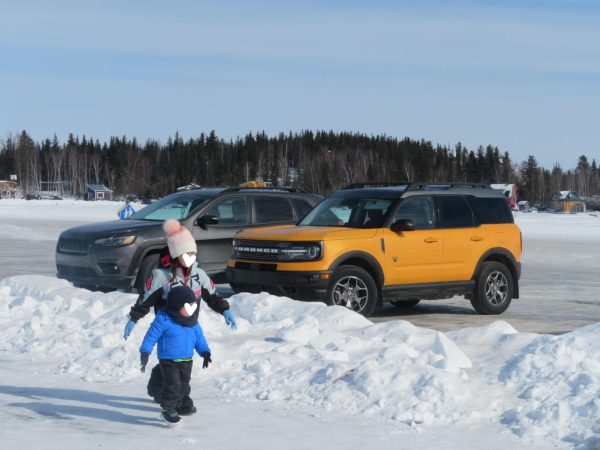It’s snowing… in May?
3 MIN READApril showers bring… May showers? You might want to put away the sunscreen and grab your ski stuff from the corner it sits in from May to November. Late winter storms are here and it looks like they are staying. Already in the month of May, the San Francisco Bay Area has been hounded by rain and 18 inches of snow has fallen as low as the foothills of the Sierra. While not unheard of, this much precipitation is quite rare, especially sunny California. However, aside from just ruining your beach day these late season storms have causes and effects that are much more concerning. To everyone on the hurricane-prone gulf shores, Californians probably sound like they’re overreacting when it comes to some little storms, but we are talking big picture here.
What is causing late season storms?
While many put it up to chance and natural climate cycles, the evidence has been there for years now that there is an obvious anthropogenic cause regarding increased instances of extreme weather events and longer and more extreme storm seasons. Most of the studies have been directed and gulf of Mexico as this is where the majority of major hurricanes form and strike, but the research applies to all forms of atmospheric weather. The Intergovernmental Panel on Climate Change (IPCC) conducted a study in 2014 that outlined connections between warming of the atmosphere and increased atmospheric moisture levels, which in turn leads to higher levels of precipitation and more extreme weather events such as flooding and tropical storms. The change in atmospheric moisture due to warming also affects the seasonal nature of storms. Storm season the west coast has historically occurred between the months of October and April but in past years has been extending out on either side. This is because wetter and warmer atmospheres delay dry summers and extend the storm season, regardless of if the storm is cold or not. In recent years, studies have shown California to be experiencing an increasingly powerful North Pacific jetstream, bringing cold air and strong storms down from the Arctic and gulf of Alaska. Similar to the “polar vortex” that gripped the Northern United States in January this year, atmospheric weather events such as this are caused by sudden stratospheric warming in the Arctic circle, a phenomenon that weakens the spinning of Arctic winds and allows frigid air to sweep across the continental U.S.. The increased occurrences of sudden stratospheric warming in the Arctic are directly related to elevated global temperatures. So although it may feel colder this May, it’s because we’re making the Earth hotter.
How do strong late season storms affect us?Hate the hills turning yellow? Not ready to put the ski stuff away? You might be thrilled by the extra storms California is receiving, however, these rare weather events can have dire consequences on the state’s environment. Of all severe weather events, California most routinely struggles with wildfires, the (generally) dry climate and shrubby biome is perfect for severe fires. Many assume that California’s fire season will be less severe due to the wet weather we have been experiencing. The reality however is that extended wet winters may push the beginning of wildfire season back, but increases plant growth across the state, providing more fuel for more severe fires. This means that yet again, the state braces for another long and possibly life-threatening fire season in 2019. Furthermore, industries such as wine and fruit farming will be hit hard by these late season storms. The harvest cycles for grapes and citrus fruits are fragile and late season storms that bring frigid are and massive amounts of precipitation can throw off the harvest cycles for winemakers in California’s wine country, a small hiccup that can be detrimental to business. Finally, due to the rarity of such cold, powerful storms in mid may, the safety of people travelling through Northern California and the Eastern Sierra is being called into question. This is an extremely popular time of year to begin long outdoor trips such as the John Muir and Pacific Crest trails and backpackers at elevation could be in severe danger if unprepared for the feet of late season snow that has fallen over the past week.






![UNSUNG HEROES — Fred Korematsu, Karen Korematsu and Aiko Herzig-Yoshinaga are awarded the Asian American Justice Medal to recognize their fight for justice following the incarceration of Japanese Americans during World War II. In addition, scientists Shuji Nakamura, David Ho, Tsoo Wang, Mani Menon and Chih-Tang “Tom” Sah receive the Asian American Pioneer Award. "[As a scientist,] it is crucially important to be able to communicate your work and your discoveries to [not only] other scientists, but also to the general public," Ho said. Photo by Talia Boneh](https://cmagazine.org/wp-content/uploads/2025/07/useee-600x400.jpg)
